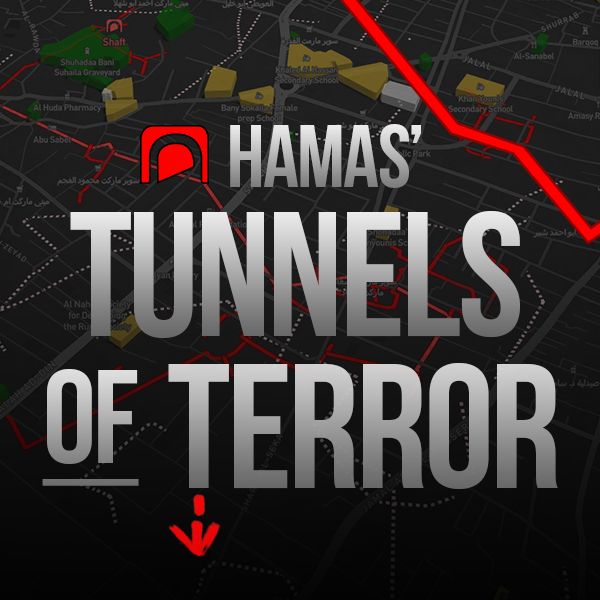How can an article about Jewish prayer on Jerusalem’s Temple Mount fail to note that the site is the holiest in Judaism?
It’s an egregious omission for a pair of professional journalists at one of the world’s leading newspapers. But that’s exactly what Patrick Kingsley and Adam Rasgon have done in a piece published by The New York Times on August 24 titled, “In Shift, Israel Quietly Allows Jewish Prayer on Temple Mount.”
In fact, the piece is riddled with errors and distortions.
Join the fight for Israel’s fair coverage in the news
The Temple Mount is Judaism’s Holiest Site: Why Can’t The Times Admit It?
While the article explicitly states that the Dome of the Rock is the “third-holiest place in Islam,” (thus creating the false impression that the Dome of the Rock is the third-holiest place in Islam, when it is actually the nearby Al-Aqsa mosque,) it fails altogether to note that the Temple Mount is Judaism’s most revered site. Totally omitted is the fact that Jews around the world pray in the direction of the Temple Mount. It is undeniably central to Judaism.
This omission is made starker in the context of the sentence in which the words “third-holiest place” appears, which makes it sound as if the Jewish temples were built on the site of the Dome of the Rock, rather than the other way around:
Ultimately, they seek to build a third Jewish temple on the site of the Dome of the Rock, the third-holiest place in Islam.”
Chronology matters, and it is worth noting that the Dome of the Rock was built in the late seventh century CE. The First Jewish Temple, however, was completed in 957 BCE — approximately 1,700 years earlier.
This distortion is made starker still by the fact that the article describes the importance of Al Aqsa to the Palestinian identity:
Many Palestinians consider the Aqsa compound the embodiment of Palestinian identity, the animating force behind the aspiration for a Palestinian capital in East Jerusalem.”
It’s telling that while The Times finds space to mention that Al Aqsa is important to Palestinian identity, the ‘newspaper of record’ doesn’t see fit to include the basic fact that the Temple Mount is integral to Judaism and Israeli identity. This omission fuels public misconceptions regarding Israel and Jews’ claim to the Temple Mount, making it sound as if they are invaders when in fact the Jewish presence there far pre-dates the existence of Islam.
And that’s before addressing the trite last few words of the quotation above — the myth that Palestinians want only the eastern part of Jerusalem.
Related Reading:
Serially Contextualizing Palestinian Violence
Another bizarre aspect of the story is the manner in which Palestinians are not held to account for their own actions.
The article correctly notes that while Israel is responsible for security at the Temple Mount, it has allowed the Jordanian government to retain administrative oversight there, and has enforced an unofficial ban on Jewish prayer. But the next part is far more contentious, as readers are told that, “When this balance of power has appeared to teeter, it has often led to violence.”
How so?
The examples listed start with former Israeli prime minister Ariel Sharon’s 2000 visit, described as a “provocation” that “led to the second Palestinian intifada, or uprising.”
This particular lie has already been debunked by HonestReporting repeatedly (see here, here and here).
Next on the list is an incident in 2017 when Israel set up metal detectors at the Temple Mount’s gates. The Times characterizes this as having:
… led to unrest that left several people dead and briefly threatened to unleash another major uprising.”
Again, this is a gross distortion of the facts. Israel installed metal detectors after two Israeli police guards on duty at the Temple Mount were shot dead by Palestinian gunmen in July 2017. The security measures were put in place in response.
The Palestinian reaction? More violence. Despite metal detectors being in place for many years at the adjacent Western Wall, frequented by millions of Jews yearly, Palestinian leaders vehemently rejected the move. After Israel initially closed the site, Hamas declared a “religious war,” and Palestinian Authority President Mahmoud Abbas’ ruling Fatah party incited a “fight for Jerusalem.” The Jordanian Islamic Waqf, which administers the mount, urged Muslims “to reject and boycott all the Israeli aggression measures.”
In the aftermath, multiple terrorists stabbed Jews, including one who broke into a family home and murdered a 70-year-old grandfather and two of his children. Other attacks included Arab Israeli civilian stabbed in central Israel by a Palestinian man from Qalqilya, while an Israeli guard at the Israeli Embassy complex in Amman was knifed by a Jordanian citizen.
Characterizing these acts of violence as if they were caused by the installation of basic security equipment at the Temple Mount subtly legitimizes them.
Another example listed is the mass violence atop the Temple Mount in the lead-up to May’s Hamas-initiated conflict against Israel. According to The Times:
… when the Israeli police raided the compound several times last spring, it contributed to tensions that led to an 11-day war with Hamas, the militant Islamist group in the Gaza Strip, as well as days of unrest within Israel.”
Again, this is a deeply problematic telling of events. Israeli police did not simply “raid the compound.” Israel was compelled to act after thousands of Muslim worshippers chanted violent slogans while rioting on the Temple Mount. Large rocks and heavy objects were brought to the Temple Mount and stockpiled inside Al Aqsa Mosque. Videos of the clashes also captured Palestinians using fireworks as weapons, forcing Israeli border police to use shields to protect themselves. Lasers were used to distract and disorient the officers.
Yet, The Times chooses to focus exclusively on Israel’s response, not the events that necessitated it.
The media narrative has been that Israel is at fault for taking defensive action in #Jerusalem – even though Palestinians used rocks, fireworks and other weapons on the Temple Mount.
Feat. @BBCNews, @ImtiazTyab, @guardian, @FRANCE24, @obk & @Reuters#IsraelUnderFire pic.twitter.com/QuTXpp15M3
— HonestReporting (@HonestReporting) May 11, 2021
Related Reading: AP Blames Temple Mount Tensions on Jews, and Jews Alone
Jewish Prayer — Not Muslim Intolerance — Leads to Conflict?
Noting the increasing number of Jews allowed to pray at Judaism’s holiest site, Kingsley and Rasgon see “a shift that could aggravate the instability in East Jerusalem and potentially lead to religious conflict.”
Really?
Instead of this exercise in crass victim-blaming, the Times should be asking why the Palestinians are so offended by praying Jews that there was an unofficial ban on Jewish prayers at the Temple Mount for decades. Why should Jews be forbidden from praying anywhere, much less their holiest site? Surely such a policy constitutes a severe breach of religious freedom.
The reason why there is “instability in East Jerusalem” is because of a lack of tolerance on the part of Palestinians. Penning an article that frames Jews seeking to exercise their basic rights as liable to provoke renewed hostilities exposes the depth of The Times’ inability to understand how Palestinian bigotry and discrimination drive the conflict.
Not for the first time, international media outlets simply can’t seem to admit that Jews are deeply connected to Jerusalem.
Related Reading:



